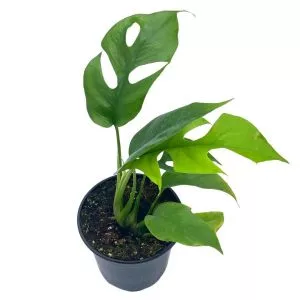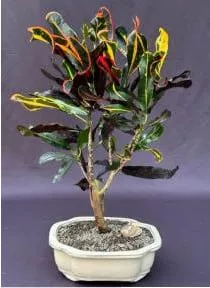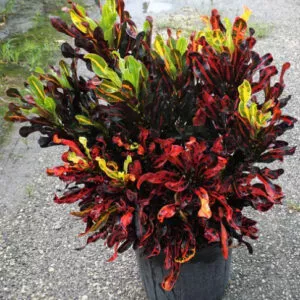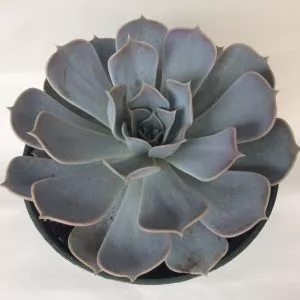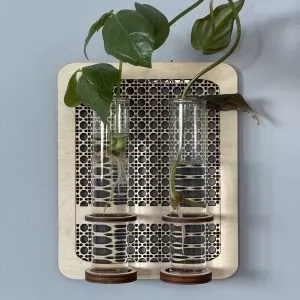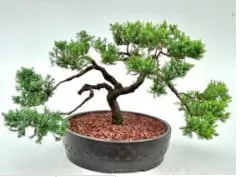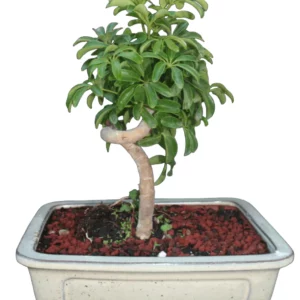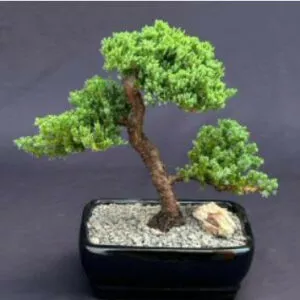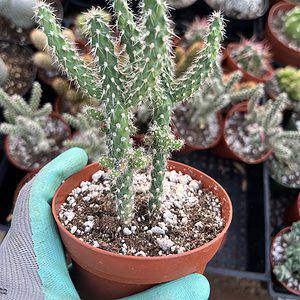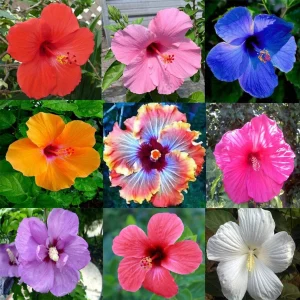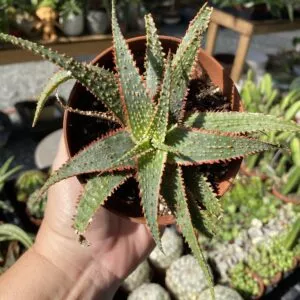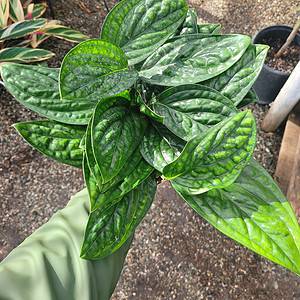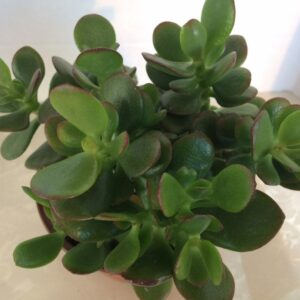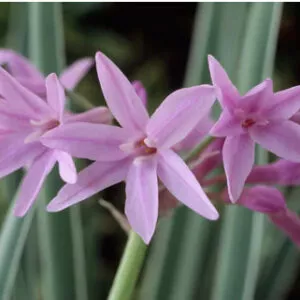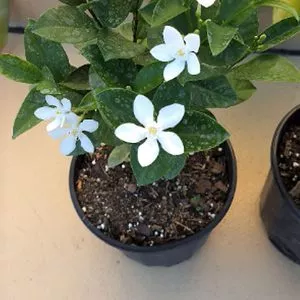No products in the cart.
Table of Contents
Do you love to have variegated silver markings hanging in your garden? Then this String of hearts plant is the perfect fit for you! This stunning succulent is a trailing vine that has captured the hearts of many plant people.
Its heart-shaped, patterned leaves are dark green with variegated silver patterns in cream, pink, and green colors. This Chain of hearts is best grown as a hanging plant.
A flower may bloom at unexpected periods throughout the year. However, summer and fall is the best time for this flowering vine to bloom. The inch-long flowers are intriguing and unusual having a bulbous base and tubular corolla in colors of white to pale pink.
The five purple petals are united at the tips to form a cage-like canopy, giving the flowers the appearance of a miniature inverted pink vase.
Got interested in this String of hearts plant? Please read the information below for you to find it out!
String of Hearts Plant Care Basics
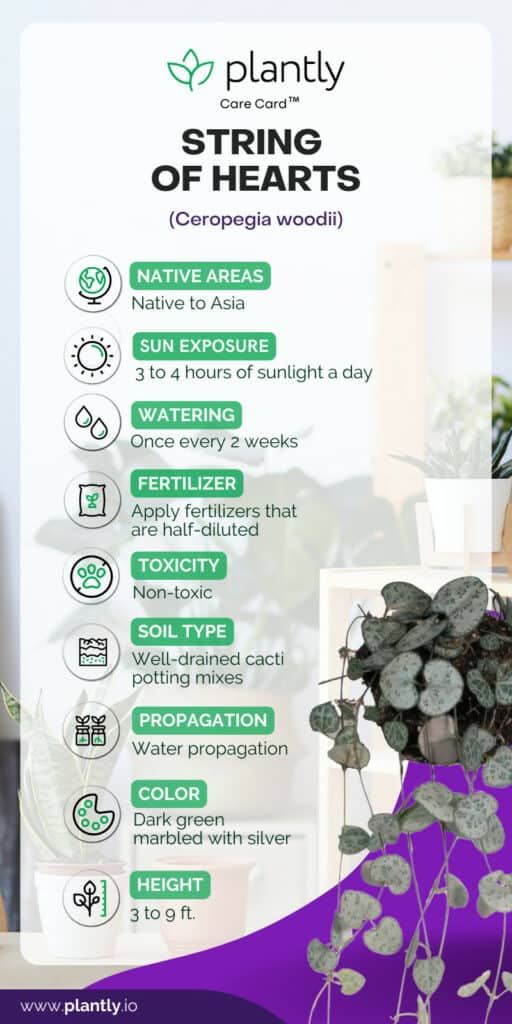
Already have a hint of how to take care of this String of hearts? Never stop here and learn more tips down below!
Ideal Soil Mix
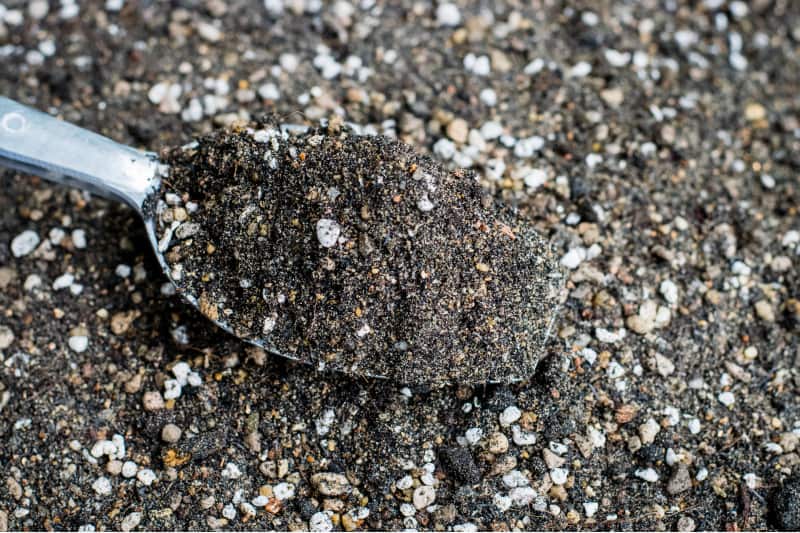
To avoid killing your String of hearts, select a soil mix that drains well between waterings. You can get a succulent/cactus potting mix to use. This succulent dislikes sitting in wet soil because it causes root rot.
Although they prefer good fertility, the plants might become straggly if the mix is too rich. However, if you’re using regular potting soil, you’ll need to add things like pumice or perlite to ensure adequate drainage. Other than that, your plant is good to go.
In stock In stock Only 1 left in stock In stock
$19.99
Sold By:
BubbleBlooms
Anthurium White, Very Rare Limited Live plant with flower, in a 4 inch pot
Only 999 available and it’s in 1 people’s basket Rated 4.81 out of 5 based on 279 customer ratings03
Sold By:
BubbleBlooms
$12.99
Sold By:
BubbleBlooms
$15.99Monstera Minima, 4 inch, Rhaphidophora tetrasperma Philodendron Piccolo, Mini Ginny,
Only 98 available and it’s in 6 people’s basket Rated 4.81 out of 5 based on 279 customer ratings00
Sold By:
BubbleBlooms
Free Shipping
$101.04
Sold By:
BONSAI WORLD LLC
Croton Bonsai Tree (codiaeum variegatum)
Sold By:
BONSAI WORLD LLC
$59.95
Sold By:
Carlo's Plant Farm
6 Croton Mammy | Carlo`s Plant Farm
Rated 5.00 out of 5 based on 22 customer ratings00
Sold By:
Carlo's Plant Farm
How Often Should we water these beauties
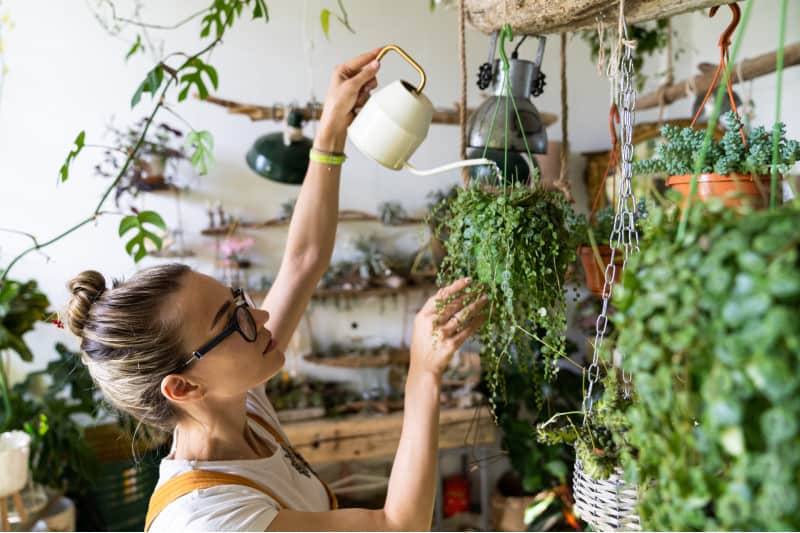
Always follow the golden rule: water only when the soil is dry. Overwatering is considerably more likely to kill your plant than underwatering. When the soil dries out, give this drought-tolerant semi-succulent a nice drink.
Then, wait until the soil is dried before sprinkling it again. This is applicable during the plant’s growing season: summer.
Allow your String of hearts to rest during the winter months by watering it less frequently. It may appear droopier during the winter but always resist the temptation to compensate by adding more water. This occurs when the plant enters a semi-dormant stage in preparation for new growth in the spring.
Ideal Lighting

The String of hearts enjoys bright light throughout the day. But it doesn’t mean it should be exposed to direct sun. It will also work effectively in bright indirect sunlight.
A perfect place to have the light it needs is to place them outdoors with some shades. It can also be treated as an indoor plant provided its close to the window to receive the necessary light.
Interesting facts: The plant’s foliage will be dark green with variegated silver markings when grown under direct sunshine. The foliage will be a lighter green with softer variegated patterning in indirect light
This Hearts Ceropegia woodii does not thrive in low-light conditions indoors. It’s best to place it a few feet away from a southern or western-facing window.
Pro tip: It’s also necessary to rotate the plant consistently. This will make your String of hearts receive equal sunlight, and the overall color sides are consistent.
Temperature Requirement
The String of hearts is indigenous to South Africa. As a result, you should maintain yours above 60°F. Temperatures 20 degrees Fahrenheit (-6.6 degrees Celsius) are not a problem for these plants for a short time, but not for lengthy periods.
Exposing any tropical plant to such temperature fluctuations is dangerous, as you risk losing the plant.
Important to note: The best results come from warm temperatures and good air movement.
Humidity Requirement
The String of hearts is a succulent that can be kept in drier conditions than most plants. It’s best to keep them somewhere with a humidity of 40 to 50 percent. Because this plant prefers low humidity, your regular indoor humidity should suffice.
You might not have to hydrate your Rosary vine frequently if you live in a humid climate. Handle this plant like a succulent if you don’t want it to die. However, during propagation, you may want to boost humidity levels for faster growth.
Pro tip: In their winter hibernation, your Ceropegia woodii don’t like heavy humidity.
In stock In stock In stock In stock
$16.99
Sold By:
Succulent Oasis
$20.00Large Succulent Plant Echeveria Alabaster Rose. A beautiful, white toned rosette.
Only 88 available and it’s in 1 people’s basket Rated 4.84 out of 5 based on 352 customer ratings00
Sold By:
Succulent Oasis
$35.00
Sold By:
Oakley Harvest Design Studio
Wood Rattan Plant Double Propagation Wall Station
Rated 5.00 out of 5 based on 65 customer ratings00
Sold By:
Oakley Harvest Design Studio
$18.00
Sold By:
PotHedz Plants
Philodendron Gloriosum
Only 2 available and it’s in 1 people’s basket Rated 4.96 out of 5 based on 106 customer ratings00
Sold By:
PotHedz Plants
Free Shipping
$26.96
Sold By:
CZ Grain
3 Bonsai Tree Pots with Drip Tray. XL 11 inch pots with Drain Hole. Great Gift
Only 895 available and it’s in 1 people’s basket Rated 4.60 out of 5 based on 156 customer ratings00
Sold By:
CZ Grain
Fertilizer
Fertilize the String of Hearts only during its growing season. A houseplant fertilizer will encourage the growth of longer Hearts string vines, improved health, and insect resistance. Remember to apply fertilizers that are half-diluted.
Some planters prefer to use a diluted fertilizer with each watering to avoid losing track of the plant’s fertilizing schedule. Both methods are equally effective. Just know what works best for you.
Important to note: During the winter, they do not require any fertilizer.
Propagation
The Ceropegia woodii are relatively simple to replicate using water propagation. But there are also three main approaches to propagate String of hearts which we’ve narrowed down below:
Water Propagation Method
All you need is a vase, scissors, and some clean water to propagate your Rosary vine. Cut off the vine portions you want to root. Place them in the vase, and watch them grow roots. Keep the vase in a warm, well-lit area so the root can grow as rapidly as possible. Replace the water from time to time.
The healthier roots are determined by light and temperature, and roots will appear within a few days.
Only 1 left in stock In stock In stock In stock
Free Shipping
$750.09
Sold By:
BONSAI WORLD LLC
Juniper Bonsai Tree – Trained (juniper procumbens nana)
Sold By:
BONSAI WORLD LLC
$6.00 – $40.00
Sold By:
Plants by Stinky Boo
Variegated String of Hearts
Only 30 available and it’s in 4 people’s basket Rated 5.00 out of 5 based on 2 customer ratings01
Sold By:
Plants by Stinky Boo
$17.95
Sold By:
SunSoul Plants
$22.95Philodendron Golden Goddess – ‘Lemon Lime’ Philodendron in 3″ or 4″ pot
Rated 4.87 out of 5 based on 98 customer ratings00
Sold By:
SunSoul Plants
$10.00
Sold By:
Smoot's Farm
String of Hearts Variegated Ceropegia woodii Green 2″ Pot Live Plant
Only 3 available and it’s in 2 people’s basket Rated 4.89 out of 5 based on 27 customer ratings00
Sold By:
Smoot's Farm
Soil Propagation Method
To propagate the String of hearts using the soil method, cut the vines first. Then, remove the leaves from the side you want to plant, and stick the vines into the soil. You must ensure that the nodes are buried in the soil so that the roots will develop.
Make sure the vines are in a sunlit, aerated area with slightly damp soil (water once a week) so the roots can grow.
Tuber Propagation Method
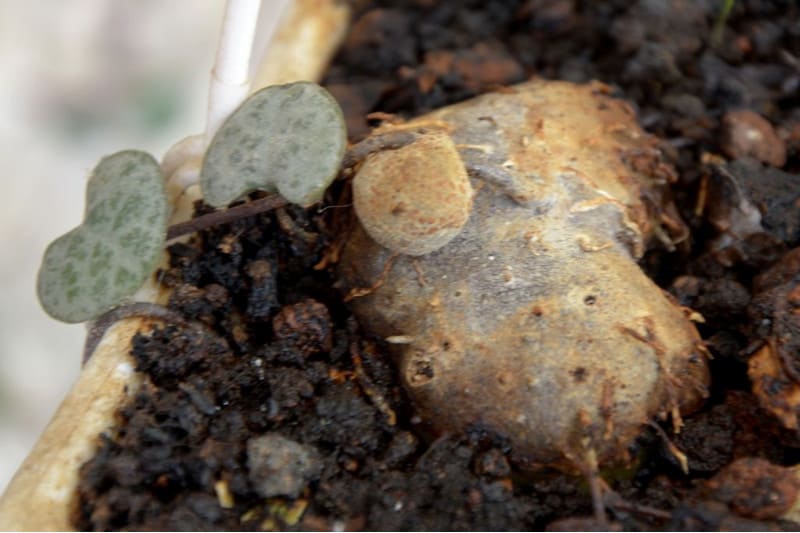
To propagate using the tuber method requires finding the most giant tuber possible. A fingernail-sized one could be a decent option. The tuber can be left on the vine and pressed into the soil to establish roots. You can clip the vine from the mother plant once it has taken root.
Growth Zone
If you live in USDA zones 10 and above, or if the temperature is constantly maintained at 60 degrees Fahrenheit or warmer, the String of hearts can be grown outdoors. Otherwise, it’s best to plant this sweet succulent in a pot that you can simply transport indoors when the weather starts to cool.
Potting
You’ll need a small container with a drainage hole or two if you want to plant your String of hearts. This species prefers to have its roots slightly constricted. Do not overpot nor choose a too big pot for the plant.
Porous containers such as terracotta will allow the soil to dry out more rapidly, whereas plastic containers would retain moisture.
Since this String of hearts prefers to be rootbound, there’s no need to repot it right away. If you wish to repot your outdoor plant, the best time is during the summer, when they are actively growing.
Only 1 left in stock In stock Only 1 left in stock In stock
Free Shipping
$87.14
Sold By:
BONSAI WORLD LLC
Large Coiled Umbrella Bonsai Tree
Sold By:
BONSAI WORLD LLC
$7.99 – $9.99
Sold By:
Succulent Oasis
Calico Kitty Succulent – Crassula marginalis rubra
Only 15 available and it’s in 2 people’s basket Rated 4.84 out of 5 based on 352 customer ratings03
Sold By:
Succulent Oasis
Free Shipping
$227.59
Sold By:
BONSAI WORLD LLC
Juniper Bonsai Tree – Trained (juniper procumbens nana)
Sold By:
BONSAI WORLD LLC
$10.99
Sold By:
Cacti and Exotica
Cylindropuntia Imbricata—Cholla Cactus
Rated 4.98 out of 5 based on 59 customer ratings01
Sold By:
Cacti and Exotica
Pruning
Your String of hearts plant does not require pruning. Gardeners seldom include pruning in their String of hearts care guide. But you can freely prune your plant if the vines are too long for your taste or appear to be too lanky.
Unless there are areas of the plant that are dead or rotting, it’s probably good without pruning.
Pro tip: You can propagate the cuttings after pruning your Rosary vine! So make sure to save some of the healthiest vines.
The String of Hearts Varieties and Similar Plants
Are you now in love with your Ceropegia woodii and curious if there are any same varieties? Don’t worry! We’ve narrowed down some of them below. And who knows? You may love to add them to your garden.
Silver Glory String of Hearts
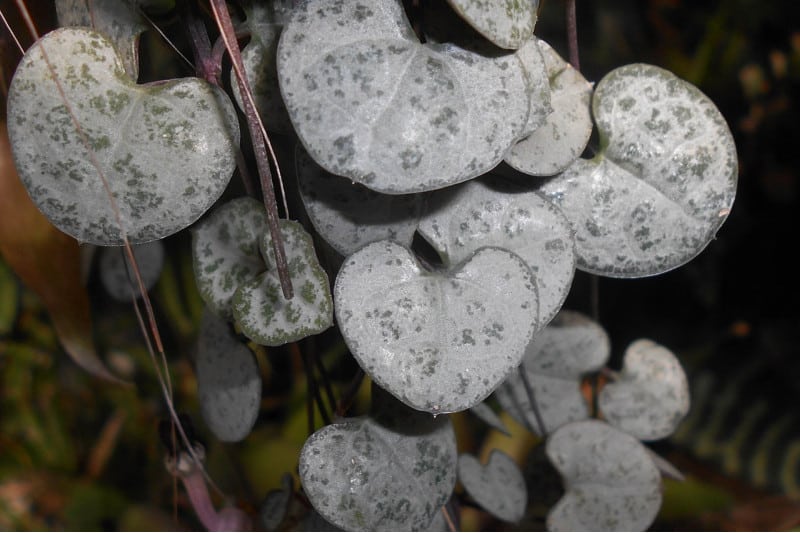
The foliage of Silver glory is almost totally silver in hue. The Silver glory resembles a pumpkin or an apple in appearance. The lower portion of the heart is more rounded or even rounded up, as you can see with the bottom of an apple.
Durban – String of Spades
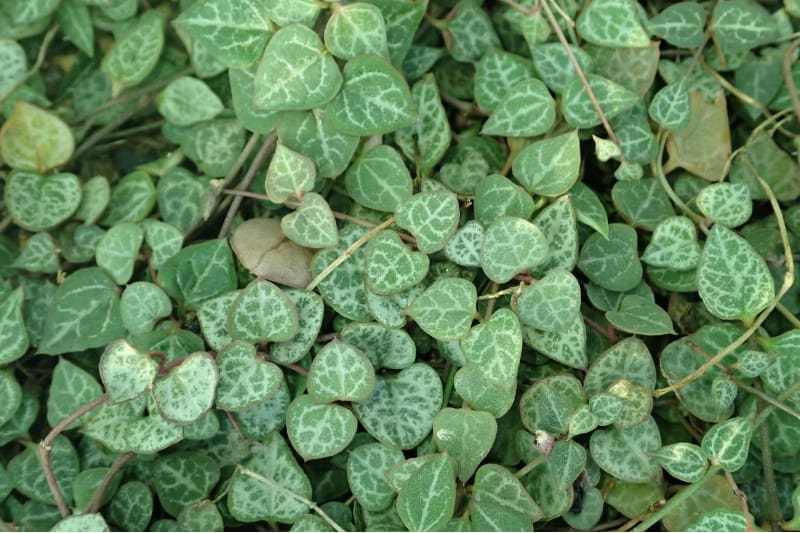
The Durban leaves have a more pointed shape, and the heart is less prominent. The leaves alternatively formed like a spade or a diamond. These have a lighter green tint and grow a little slower than the standard kind.
In stock In stock In stock In stock
Free Shipping
$8.29
Sold By:
CZ Grain
mixed color hibiscus
Rated 4.60 out of 5 based on 156 customer ratings00
Sold By:
CZ Grain
$12.00
Sold By:
Smoot's Farm
Aloe Hybrid Christmas Carol 4″ Pot Live Plant
Rated 4.89 out of 5 based on 27 customer ratings00
Sold By:
Smoot's Farm
$10.00 – $15.00
Sold By:
PotHedz Plants
Golden Pothos
Rated 4.96 out of 5 based on 106 customer ratings01
Sold By:
PotHedz Plants
$40.00
Sold By:
Plants by Stinky Boo
Monstera Peru
Rated 5.00 out of 5 based on 2 customer ratings00
Sold By:
Plants by Stinky Boo
Orange River
The irony of this plant is that you won’t see much orange hue on the foliage despite its name. The leaves of the Orange River type are lighter, more noticeable green tint. When strained, though, the leaves and under leaves take on a faint orange tint.
The leaves are heart-shaped but pointier and sharper than the standard kind.
String of Bananas
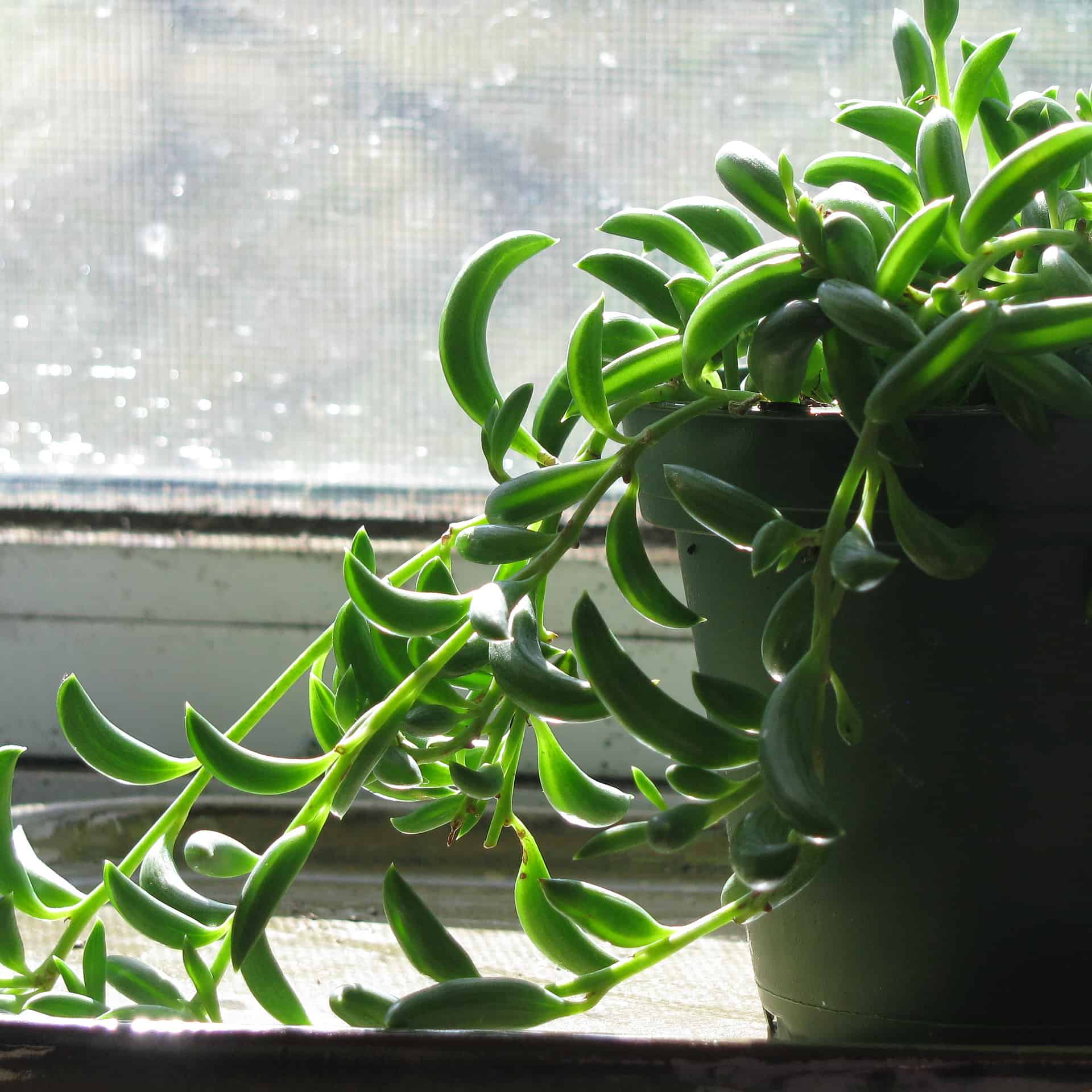
The string of bananas is a vining plant characterized by cascading, succulent stems that resemble a string of bananas. Its small, banana-shaped leaves have a vibrant green color. This trailing plant thrives in bright, indirect light and is perfect for hanging baskets or as a trailing accent in indoor or outdoor spaces.
Diseases & Pests
You also want to add how to get rid of pests in your String of hearts care guide. Read more below to find out how:
- Aphids are a frequent nuisance. They seem to be drawn in by the luscious leaves. Use neem oil to keep them away from the heart-shaped leaves.
- Scale insects such as mealybugs and other types of scale insects may also appear. Using a cotton swab dipped in rubbing alcohol, remove these. The alcohol causes the scale to fall off the leaf, which you can then remove.
- Fungal-based root rots diseases may appear in your plant. Avoid overwatering your plant to avoid root rot. You may already have a fungal root rot problem if it displays signs of yellowing leaves.
Frequently Asked Questions
The most common cause of Rosary vine’s death is overwatering. Droopy, sluggish growth, and fading leaves are all signs that the trailing houseplant is stressed. Resolving any watering difficulties is critical in saving a dying String of hearts.
Overwatering causes the leaves of your String of hearts to shed or turn yellow, brown, or black while also making them soft and mushy. If you notice these indicators, stop watering straight away and leave the soil completely dry out.
Underwatered show signs of curling leaves and may thin out due to the lack of water in their pot. A good soak of water will suffice if this happens.
When the conditions are favorable, this plant only blooms in the spring or summer. This entails enough water, nutrients, and environmental factors such as temperature and humidity. If these conditions aren’t available where you live, consider implementing them.
The string of hearts plant typically requires bright, indirect sunlight. While it appreciates ample light, it is important to avoid placing it in direct sunlight, especially during the hottest part of the day.
String of Hearts (Ceropegia woodii) is generally considered to be a relatively easy plant to care for, making it a popular choice for both beginner and experienced plant enthusiasts.
Whether you want to buy, sell, or simply reach out to other plant enthusiasts, Plantly is the right place to be!
-
$16.95Sold By: SunSoul Plants
$23.95In stock
Philodendron ‘McColley’s Finale’ Plant in 4″ pot
Only 2 available and it’s in 2 people’s basketRated 4.87 out of 5 based on 98 customer ratings03Sold By: SunSoul Plants -
$9.99Sold By: Succulent Oasis
In stock
Mini Jade Compacta
Only 4 available and it’s in 2 people’s basketRated 4.84 out of 5 based on 352 customer ratings04Sold By: Succulent Oasis -
$25.30Sold By: Carlo's Plant Farm
In stock
Society Garlic | Carlo`s Plant Farm
Rated 5.00 out of 5 based on 22 customer ratings00Sold By: Carlo's Plant Farm -
Free Shipping$29.99Sold By: Gar-Zen Botanical Design
In stock (can be backordered)
Asian Snow Wrightia Antidysenterica Rare Bush Ships Free.
Rated 4.86 out of 5 based on 49 customer ratings00Sold By: Gar-Zen Botanical Design

